The best felt tips ever and why you don’t need them
Plus some ideas for stress-free art appreciation
If you’re in the England or Wales, take a look at this open letter regarding the Children’s Wellbeing and Schools Bill. If you sign it, be sure to verify your e-mail address too.
One of the things I’m enjoying about my reduced screen time is the blissful absence of people recommending things for me to buy. Like many of you, my home is full to bursting and my bank account has the opposite problem. I really don’t need to see constant reminders of all the things I don’t yet have but could have delivered in a matter of days, if I’ll just tap in my PayPal password.
So it feels wrong to jump back online to recommend something for you to add to your own shopping basket. And the pens I’m recommending are very expensive. Who needs that recommendation?!
But, some of you, like Zena, will be looking for a really good felt tip pen. So here it is, but also here are some other thoughts on art and children (possibly just to sooth my own conscience).
The best felt tips ever and why you don’t need them
Faber Castell PITT artist pens are the best felt tips I’ve ever used. I’ve had my set for over a decade and they are still going strong. Compare that to the basic Crayola cheapies I sometimes get for the children, which dry out in less than a year. I’ve linked to one set of 6, but there are lots of different options. You can buy pens individually, in small packs, or in large packs for lots of money. They’re not cheap. DO NOT give them to a small child, because the child will press too hard and squash the nib down inside the pen, never to be seen again, and you will find it hard to retain your composure. They are waterproof and permanent, so that’s another reason to hold off until your child understands the limits of what a washing machine can do.
The nibs are a little like a brush, so they can do both thick and thin lines. There are loads of gorgeous colours. They’re waterproof, so they don’t bleed together even if you mix yellow and black. They don’t smudge or fade. You could give a pack of six to a child for every special occasion until they’d built up a good collection. The same brand does a pack of four black pens of different thicknesses, which are also excellent. I find them useful for creating various homemade educational resources as well as for artistic purposes. Again, my first set lasted a decade before one of them started to run out.
If you’re in London, the London Graphic Centre in Covent Garden is heaven for craft lovers and offers a huge range of Faber Castell products.
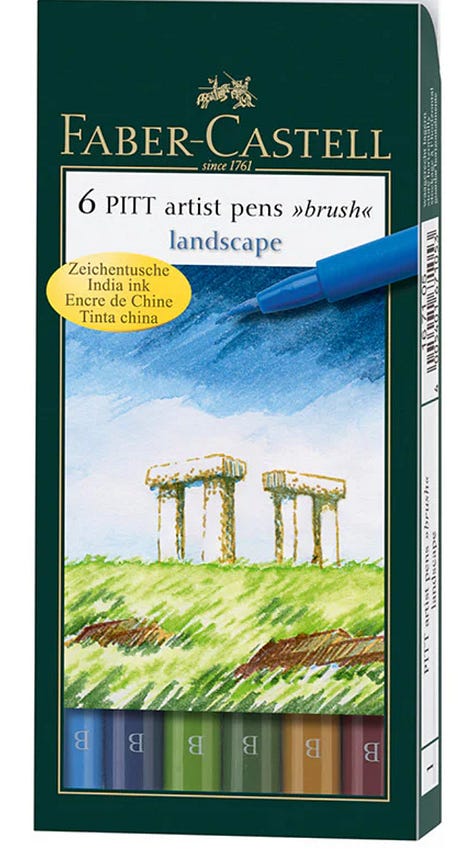
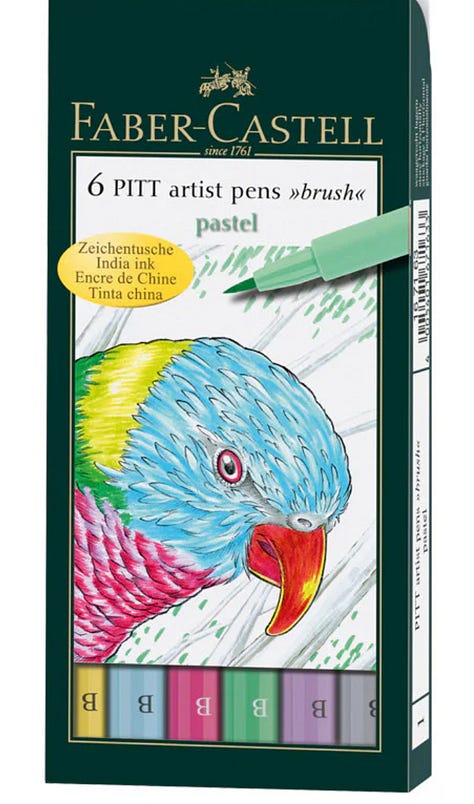
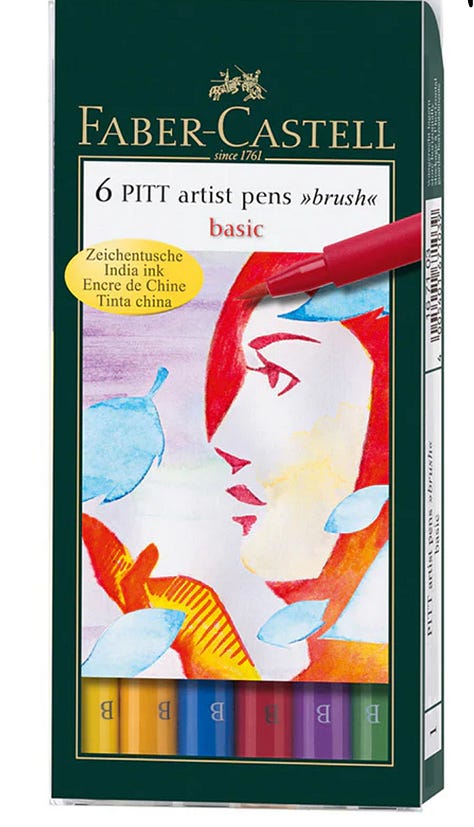
I would never buy such expensive pens for my children. We own them because, before children, I was a garden designer and they were part of my toolkit. We also have some other excellent quality art materials that I inherited, and the expensive stuff is better quality than the basic stuff with which manufactures palm off our children. Proper watercolours are a whole different experience to cheap high street ones. I find cheap brushes basically unusable. Not only are the expensive things better quality and nicer to use, they seem to last for years.
Nonetheless, I don’t think you should feel guilty if you can’t afford to offer the real deal to your children.
Remember that throughout history most children did not enjoy access to essentially unlimited paper and a full suite of artistic supplies. Art may be an important element of the human experience, but we can be creative with very limited materials. See this website for an interesting and endearing summary of children’s art through the ages, ranging from handprints to stick drawings on walls to sketches on birch bark.
Your child will be fine with only basic supplies—in fact, limited resources are often a spur to creativity, not a drag on it. Please don’t bankrupt yourself buying the best felt tip pens in the world.
How we do art appreciation without doing art appreciation
My children do a lot of drawing, but we don’t do much in the way of art projects. I’m not interested in setting up involved crafting sessions and I’m not convinced of the educational value. Not that there’s anything wrong with such activities if you and your child like them!
But I do want the children to slowly develop an appreciation for art, and a familiarity with the best art humanity has to offer. We don’t follow an art history curriculum (despite my degree being in art history!), and to be blunt, I don’t think it’s necessary for young children. But here are some things we do that work:
When we go to art galleries, we go expecting to stay for ten minutes and I ask the children to find one picture/object each that they really like (or find intriguing, or would like to have on their wall etc). Because the expectations are so low, and because the children are in control, they usually find lots that they like and we end up staying for ages. This approach encourages the children to notice what they think and how they react, not just wander round being lulled to sleep by the sound of their mother imparting wisdom as we crawl from painting to painting. (Our own reactions are not the only important thing about an artwork, of course. But great art is created to provoke a response, so honing in on your response is not a bad place to start.)
We sometimes play a game where the child chooses a painting and studies it for a minute, before describing it to me to see if I can identify it from their description.
I take paper, pencils, and rubbers so the children can sketch whatever they like. (Tip: don’t attempt to sketch a whole painting. Try copying one small element.)
In the British Museum an artist guide taught us two techniques that made sketching fun and took the pressure off children who might be disappointed that they can’t recreate a Rembrandt. The first technique was to copy an object (he chose a head and shoulders sculpture) using one continuous line—do whatever you want, but your pen cannot leave the paper for, say, two minutes. The second was to draw an object from three different angles, using a different colour each time. Both techniques encourage careful looking without demanding a perfect finished product. He also said “If you’re not looking, you’re just making it up”, which I repeat all the time.
I always buy postcards in the shop of pictures the children enjoy, which we stick on the walls or in their workbooks or use as bookmarks.
At home, I bought a big, hardback, secondhand book of great art (it’s called Art Treasures of the World, because that’s what I found in the shop, but any similar book would do). Every few months I ask the children to flick through and find some pictures they’d like to put on the walls. We put them in places they’ll actually be seen—by the table, next to the light switch, by their beds. It’s amazing to see how they are aesthetically consistent in their choices—my son gravitates towards dramatic scenes of battles or disasters, my daughter is drawn to colour and has a penchant for mosaics. As in the art gallery, this puts the children in charge and encourages them to notice their own preferences. Normally we don’t chop up beautiful books so there is also a thrilling transgressive aspect to this usually illicit activity!
For children who are disappointed in the results of their own artistic efforts, I think it helps to look at how different artists have drawn similar subjects eg. Flowers. Is van Huysum better than Monet or Marianne North or Georgia O’Keeffe? With art there is never just one right answer.
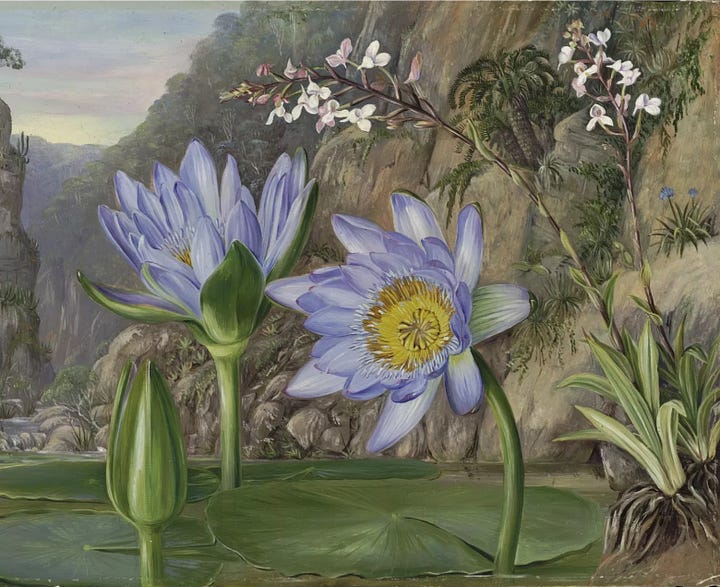
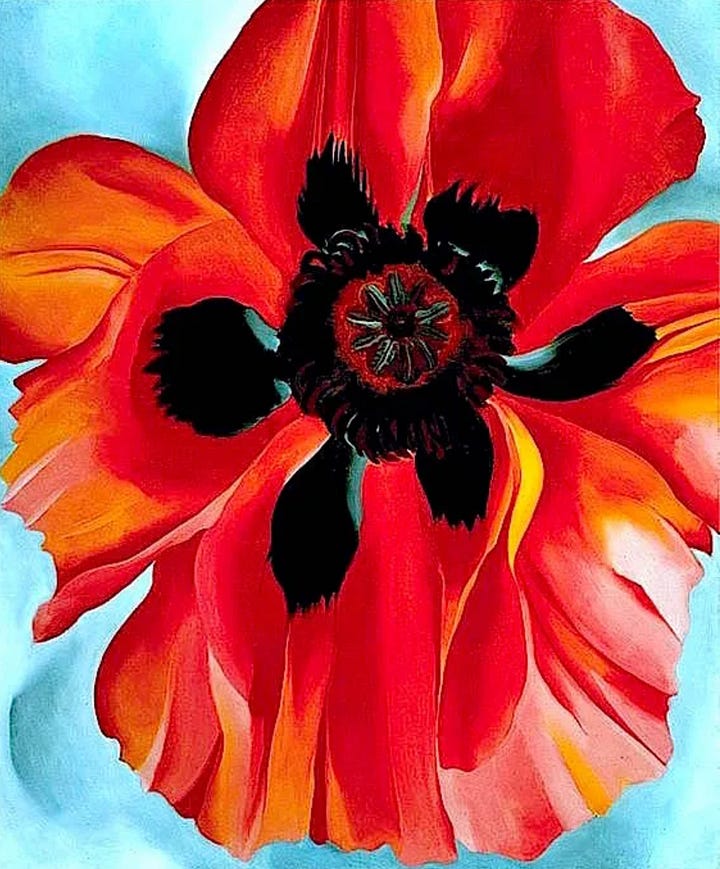
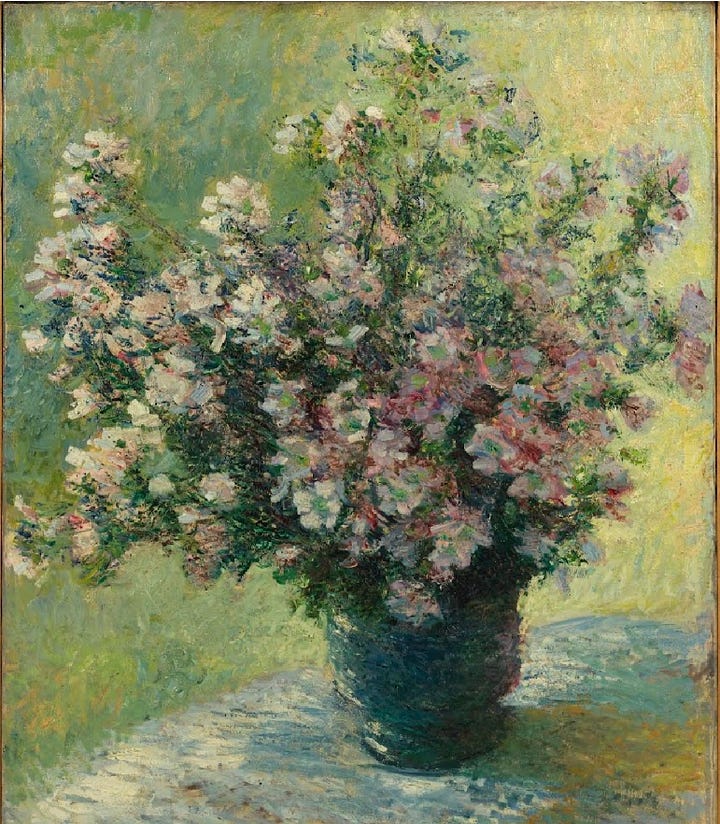

A while ago I linked to
’s post on how to do art at home. This seems a good place to do so again. My daughter especially enjoyed the free bird watercolour lessons from Lily and Thistle, which managed to be very straightforward while also producing beautiful results:Please do share your own artistic recommendations in the comments!
Thanks for reading. If you’re not subscribed, sign up for free and never miss a post.

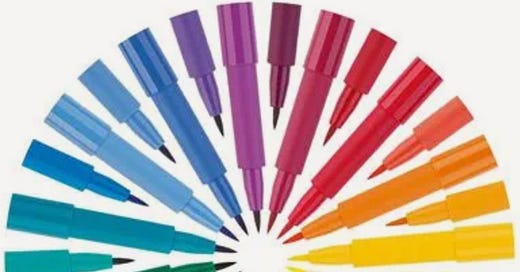



I could have written much of those post myself, also being someone who has good quality art supplies from my pre-children life, and who also majored in art history. I'm hoping this background will be useful when we get to the teen years as I haven't used it much during these early years, other than by being able to provide a range of media to create with.
I do have one idea (similar to buying an art book to cut up). I buy calendars of significant artworks/artists and then when the year is over I can cut it up and stick the pictures on the walls. Could also use for a mix and match activity where you have to guess which paintings are by which artist.
Love the hack of engaging the kids by giving them an opportunity to embrace their own agency. Those sorts of experiences are one of the many beautiful affordances of homeschooling.
PS, my favorite pens in this vein are the Pentel Brush pen (https://www.amazon.co.uk/dp/B001WAKDGI) and the Papermate Flair (https://www.amazon.co.uk/dp/B0B5DD7R1D/).